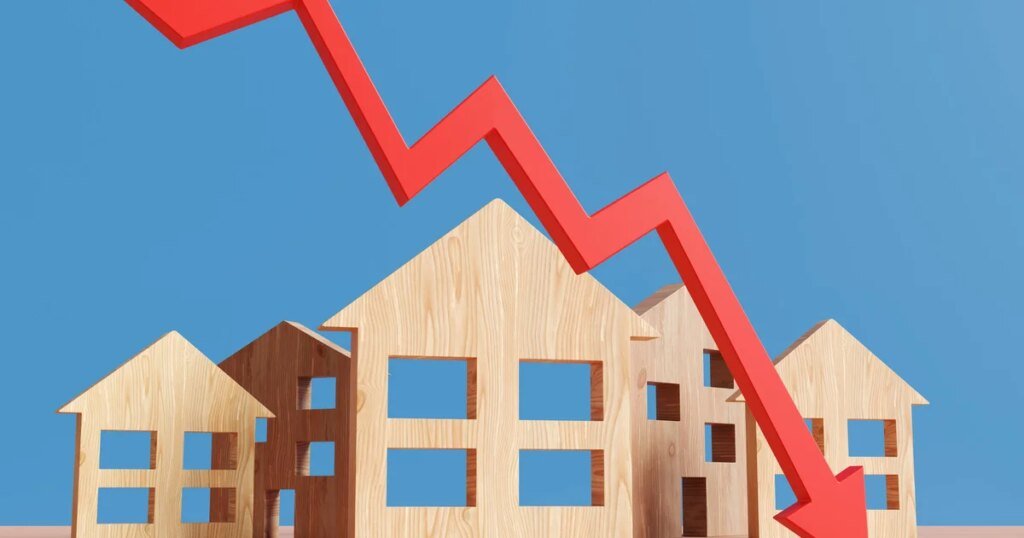Dragon Claws/Getty Images
The Federal Reserve’s consecutive rate cuts in September and October have brought welcome relief to the mortgage market. While the Fed’s rate shifts don’t directly drive mortgage rates, they still tend to have an impact on where these (and other) rates head next. For example, in late October, just prior to the official Fed rate announcement, mortgage rates briefly touched three-year lows as lenders shifted to align with the expected changes.
Since that time, mortgage rates have ticked slightly higher, and the average 30-year fixed mortgage rate is now sitting at just over 6.2%. That’s up slightly from the rates we saw in late October, but it’s still meaningfully lower than the 7%-plus rates that dominated early 2025. And, it represents real improvement for borrowers who’ve been waiting for their opportunity to enter the housing market.
For homebuyers eyeing mortgage loans in the $750,000 range, these rate shifts can have a big impact on what’s owed each month. The rate you secure on an amount that high can either stretch your budget uncomfortably tight or give you breathing room to actually enjoy homeownership. So, if you’re considering a $750,000 mortgage loan, it helps to know what your monthly payments could look like now, in today’s cooler interest rate climate.
Compare your mortgage loan offers online now to find the most affordable options.
What are the monthly payments on a $750,000 mortgage after the October Fed rate cut?
Right now, the 30-year fixed mortgage rate sits at 6.22%, down from over 7% at the start of the year. Meanwhile, 15-year fixed mortgage rates are sitting at an average of 5.50% currently, compared to over 6.2% at the start of the year. For a $750,000 loan, these shifts create substantial differences in what you’ll actually pay.
Here’s what your monthly principal and interest payments would look like at today’s average rates:
- 30-year mortgage at 6.22%: At this rate, your monthly payments would be $4,603.26.
- 15-year mortgage at 5.50%: At this rate, your monthly payments would be $6,128.13.
To understand how much today’s savings add up to, here’s how those costs compare to earlier rate periods. In January 2025, for example, mortgage rates were materially higher, averaging 7.04% on a 30-year mortgage loan and 6.27% on a 15-year mortgage loan. The difference is clear when calculating the monthly payments, which would have been the following at those rates:
- 30-year rate at 7.04%: At this rate, your monthly payments would be $5,009.23.
- 15-year rate at 6.27%: At this rate, your monthly payments would be $6,438.85.
These numbers illustrate how much improvement has occurred since the start of the year. A borrower taking out a 30-year mortgage today saves more than $405 per month and more than $4,860 per year compared to January simply because rates have come down. For 15-year mortgage loan borrowers, today’s rates reduce the payment by over $310 each month and over $3,720 per year.
Back in October 2024, mortgage rates were higher than they are today, though not as high as what was offered at the start of the year. At an average rate of 6.72% for 30-year mortgage loans and 5.99% for 15-year loans, here’s what the monthly payments would have been late last year:
- 30-year rate at 6.72%: At this rate, your monthly payments would be $4,849.54.
- 15-year rate at 5.99%: At this rate, your monthly payments would be $6,324.87.
While the year-over-year drop isn’t as dramatic as the drop that occurred between January and November of this year, the savings still add up to over $246 per month and over $2,952 per year on a 30-year mortgage loan. And, borrowers opting for 15-year mortgage loans would save about $196 each month and about $2,352 annually at today’s rates.
Learn how low your mortgage loan costs could be in today’s rate environment.
How much does it cost to refinance a $750,000 mortgage at today’s average rates?
Some homeowners may also be considering whether today’s rates make refinancing worthwhile. Here’s what a $750,000 refinanced mortgage costs at today’s averages:
- 30-year refinance at 6.50%: At this rate, your monthly payments would be $4,740.51.
- 15-year refinance at 5.86%: At this rate, your monthly payments would be $6,272.34.
For homeowners who locked in a rate when mortgage averages were in the 7% range, refinancing could reduce their monthly payment or shorten the loan term without a massive jump. But borrowers should also weigh closing costs, the break-even timeline and how long they plan to remain in the home, all of which are factors that can determine whether a refinance genuinely saves money over time.
The bottom line
A $750,000 mortgage is a major financial responsibility, but today’s rates — softened by the Fed’s recent cut — make the monthly payment more manageable than it would have been earlier in 2025 or late 2024. Buyers today can expect savings of hundreds of dollars per month compared to those earlier rate environments. And for current homeowners with higher-rate loans, refinancing may unlock additional savings depending on their existing rate and long-term plans.


